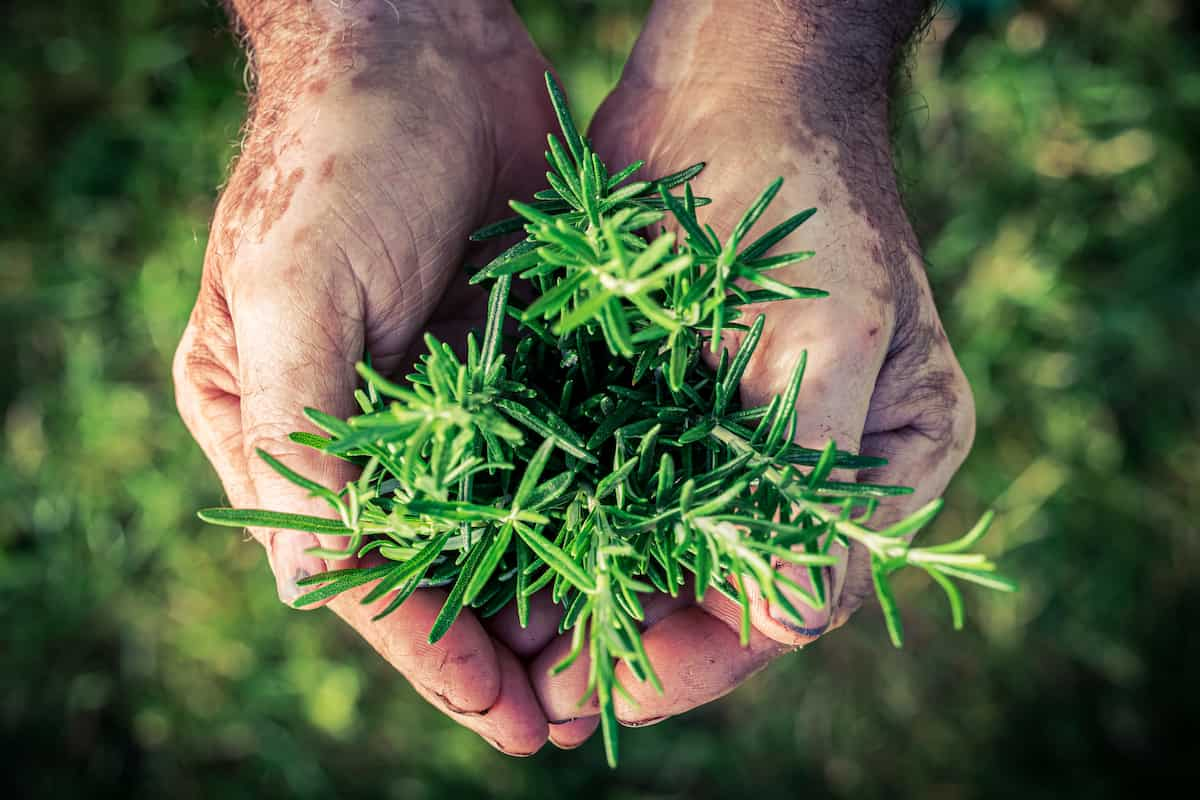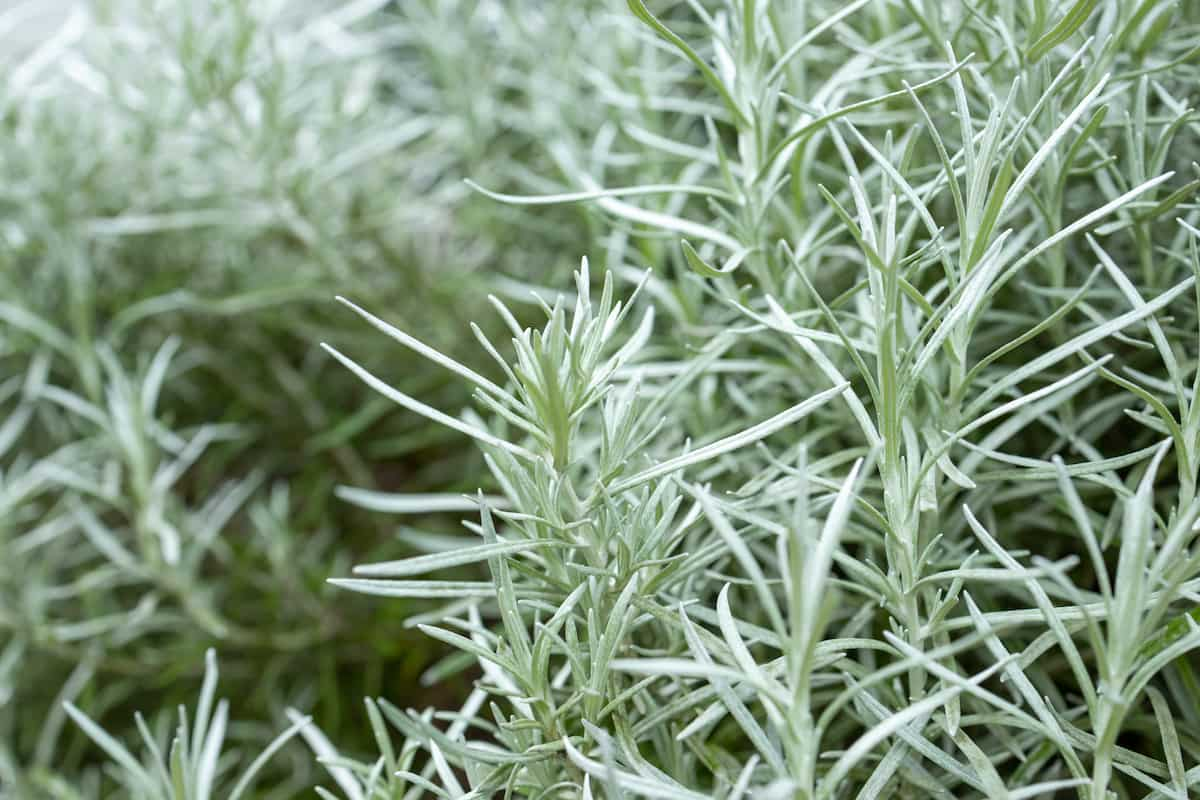Due to the enormous demand for fragrant herb, rosemary growing has become increasingly popular in recent years. Because of its low input needs (including soil, water, and labor), it is well-suited to subsistence farming. This report takes you through every stage of establishing a rosemary farm on an acre of land, from choosing the location to planting, harvesting, and selling your crop.

1 Acre Rosemary Farming Project Report
What is Rosemary Farming?
Rosemary farming refers to cultivating rosemary plants for their essential oil and dried herb. It involves selecting well-drained sandy loam soil, preparing the land by ploughing and adding organic fertilizers, and propagating the plants through stem cuttings or layering of roots. Rosemary plants require full sun and less watering and can tolerate hot and cold climates. Common pests and diseases include spider mites, mealy bugs, powdery mildew, and root rot. Harvesting can be once or twice a year, with the first cutting done 215 days after planting.
Market and Demand for Rosemary Cultivation
- The demand for natural ingredients in food and beverages is driving the growth of the rosemary extract market.
- Europe is the largest market for rosemary extract due to its widespread use in the region’s traditional cuisine.
- The Asia-Pacific region is expected to witness significant growth in the market because of increasing awareness of the health benefits associated with rosemary extract.
- The cosmetic and pharmaceutical industries are also likely to contribute to the development of the rosemary extract market.
Best Package and Practices for Rosemary Farming
- Site selection: Choose well-drained sandy loam soil with a pH between 5.5 and 8.9, remove weeds and add organic fertilizers while preparing the ground.
- Propagation: Use stem cuttings or layering of roots in summer, or purchase ready seedlings from nurseries.
- Propagation Type: Cuttings from growing stem tips are the most effective propagation method, Cut 12-15cm long cuttings, remove the bottom 2/3 of the leaves, and place them in the growth medium. A mist bed with a heated floor can aid in root formation. Layer propagation can be done in summer by pegging lower branches under sandy/moist soil. Seed propagation is not recommended for commercial farming due to slow germination and cross-pollination.
- Care and management: Apply organic and balanced fertilizers, and irrigate until roots are well established. Mulch helps in retaining soil moisture and preventing weeds. Hand weed and hoe to reduce most weeds.
- Pests and diseases: Common pests include spider mites, mealy bugs, thrips, and whiteflies, and common diseases have powdery mildew, root rot, and fungal problems.
- Harvesting: Harvest leaves with the flowering onset and flowering tops with a sickle. Use mechanical harvesting. The first cutting can be done in the seeding year but is delayed until 18 months for better yield. Expect an average yield of 30-75 kg of essential oil per hectare and 2000-2250 kg of dry herb per hectare. Use dried leaves for distillation.
- Best time to start farming: Spring is the best time to start rosemary farming.
- Ideal temperature: Rosemary plants can tolerate hot and cold climates and thrive best at day temperatures between 20° C and 26° C.
- Spacing: Space beds 1-2 meters apart with 40 to 50 cm raw space for machine cutting. Use a total of 50,000 to 60,000 plants per hectare.
Best Rosemary High Yield Variety for Rosemary Cultivation
- Tuscan Blue: a robust variety with strong, upright growth and a deep blue-green colour.
- Blue Spires: a tall and upright variety that produces long stems with dark green leaves.
- Barbecue: a compact and bushy variety that is particularly flavorful and aromatic.
- Spice Islands: a fast-growing and productive variety with high essential oil content.
- Salem: a compact and bushy variety with a strong aroma and good drought tolerance.
In case you missed it: Hydroponic Rosemary Farming in a Greenhouse: Key Rules to Start from Scratch

Cost of Cultivation for 1-Acre Rosemary Cultivation
Initial Capital Investment for 1-Acre Rosemary
| Expense | USD | INR |
| Land digging | $270 | Rs. 20,000 |
| Fencing | $75 | Rs. 5,000 |
| Cost of power tiller | $2,160 | Rs. 160,000 |
| Agricultural equipment | $225 | Rs. 15,000 |
| Storehouse construction | $750 | Rs. 20,000 |
| Tubewell/submersible pump cost | $135 | Rs. 10,000 |
| Pump and electrical installation | $270 | Rs. 20,000 |
| Agricultural equipments | $60 | Rs. 4,000 |
| Total Initial Capital Investment | $3,015 | Rs. 254,000 |
Recurrent Cost
expenses related to labor, fertilizer, seeds, and other inputs required for cultivation. These expenses are incurred regularly and are necessary for the continued production of the crop.
| Expense | USD | INR |
| Cost of Labour | $230 | Rs. 16,800 |
| Fertilizers and chemicals | $405 | Rs. 30,000 |
| Planting Material | $558 | Rs. 41,000 |
| Munching Sheets | $135 | Rs. 10,000 |
| Miscellaneous Cost | $68 | Rs. 5,000 |
| Total Recurring Cost | $1,396 | Rs. 102,800 |
The Grand Total is the sum of the Capital and Recurring costs. It is the total amount of money required to cover all expenses related to the cultivation of rosemary on one acre of land.
| Total Cost | USD | INR |
| Initial Capital Investment | $3,015 | Rs. 254,000 |
| Recurring Cost | $1,396 | Rs. 102,800 |
| Grand Total | $4,411 | Rs. 356,800 |
Note: The costs mentioned are approximate and may vary depending on location, market rates, and labor costs.
Total Returns from 1 Acre Rosemary Cultivation
The average yield for 1 acre of rosemary cultivation is approximately 1000 kg of dried leaves. The average selling price of dried rosemary leaves is around Rs. 350 per kg, which makes the total revenue generated from the 1 acre of rosemary cultivation Rs. 3,50,000 ($4,600 USD).
Net Profit from 1-Acre Rosemary Cultivation
- Total Income: Rs. 350,000 ($4,600)
- Total Investment up to 1 year: Rs. 356,800
- Net Profit = Total Income – Total Investment – Recurring Cost
- Total Profit after one year is $2,700 / Rs. 1,95,000 (more based on management).
Note: It is needed to note that the given data only covers the first year of cultivation, and the subsequent years may yield higher profits with multiple harvests. It takes 215 days after planting for the first harvest in rosemary farming. From the second year onwards, three crops can be taken in a year at an equal interval of 3-4 months. A successful yield can be achieved up to 3-4 years after planting.
Challenges and Risks in Rosemary Cultivation
Rosemary cultivation can face various challenges and risks. One of the challenges is the discoloration of leaves due to cultural problems, which could be caused by overwatering or poor soil drainage. Spider mites can cause yellow stippling on the leaves, while whiteflies can weaken the plant and cause yellowing of foliage.
In case you missed it: Frequently Asked Questions About Rosemary Farming

Scale insects can damage the foliage, and mealybugs can stunt growth and cause leaf damage. Botrytis blight can also cause older leaves to rot. To overcome these challenges, farmers must ensure proper irrigation and drainage, regular monitoring of pests, and timely application of pesticides or natural remedies.
Conclusion
Rosemary farming is a profitable business with a potential for high returns. With proper planning, management, and care, a 1-acre rosemary farm can generate significant income. However, it is important to consider the challenges and risks involved, such as pests and diseases, and to have a long-term perspective, as a successful yield can take up to 3-4 years of planting.
- Ultimate Guide to Ossabaw Island Hog: Breeding, Raising, Diet, and Care
- Ultimate Guide to Juliana Pig: Raising Facts, Size, Diet, Care, and Lifespan
- Raising Lleyn Sheep: Disadvantages, Price, Uses, Characteristics, and Care
- Ultimate Guide to Meishan Pig: Breed Facts, Breeding, Raising, and Care
- Ultimate Guide to Teacup Pigs: Raising, Diet, Lifespan, Cost, and Care
- Guide to Raising Poll Dorset Sheep: Facts, Profile, Characteristics, Uses, and Care
- Ultimate Guide to Bighorn Sheep: Characteristics, Diet, Lifespan, Breeding, and Lifecycle
- Ultimate Guide to Raising Katahdin Sheep: Farming Facts, Breed Profile, Uses, and Care
- Ultimate Guide to Raising Oreo Cows: Belted Galloways Farming Facts, Profile, Uses, and Care